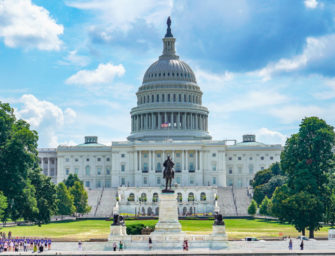The Value of Science and the Benefits of Investing
As I sat down to compose this post, the irony of the situation was striking to me.
A few weeks ago, AGU and NASA released a press statement regarding new findings of serious water decline in the Colorado River Basin, potentially posing an even greater threat to water availability in the West than previously thought. This discovery was made possible through the GRACE mission.
GRACE uses satellite data to measure aquifer and ground water availability, and it’s an excellent example of how investments in research result in scientific information that is critical to policy making. Because the United States has traditionally placed value on significant investments in, and funding for, basic and applied science, we tend to take for granted the benefit we receive from programs like GRACE (and hundreds of others). Getting daily weather reports and alerts about approaching severe weather. Being sure that the water you drink and the air you breathe is safe. Having lithium available to power our cell phones. The list goes on and on.
So here is the irony.
Despite decades of reaping the benefits that come from federal investments in scientific research–which include the knowledge and innovation that allowed us to advance as a society and recognize dangers coming our way, such as the water situation in the Colorado River Basin –Congress is deadlocked, unable to find bipartisan support for future investments.
As I write this, the House and Senate cannot agree on how to fund science. And in some cases, they are even considering actions that would fundamentally threaten our public safety. For example:
- Severely cutting National Oceanic and Atmospheric Administration funding for atmospheric and ocean research, the national weather service, and climate services, which guide our understanding of the environment, protect our ocean and coastal resources, and warn us of dangerous weather.
- Reducing Department of Energy funding for energy efficiency and renewable energy, which help to diversify our energy portfolio and reduce greenhouse gas emissions.
- Prohibiting funding to implement a national ocean policy that would allow us to protect the health and biodiversity of the oceans.
- Curtailing funding for the National Climate Assessment and the Intergovernmental Panel on Climate Change, which help us to understand the complexities of climate science and its impacts as well as to prepare for, adapt to, and mitigate the consequences.
U.S. investment in research and development is already at its lowest level in a decade (insert a chart showing this), and we are already feeling the impact of this decline. For example, check out the status of stream gauges by the USGS. Due to funding shortfalls, over 200 were recently discontinued, and nearly 100 are likely to be unfunded.
Investing in research isn’t a blue state or red state issue, it is a public issue. Congress is risking our nation’s ability to innovate, spur economic growth, protect public safety, and assure national security, let alone remain competitive in an increasingly global and interconnected world.
This August, every member of Congress will return home to their states and districts. This is an ideal time to educate them about your research, its relevance, its impact on the communities they represent, and its value to society, and AGU has plenty of tips and tools to help make your visit a success. I hope you will let the voice of your science be heard.






There are no comments
Add yours